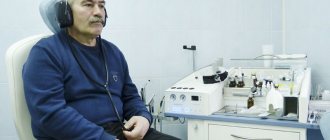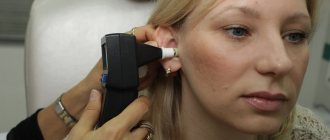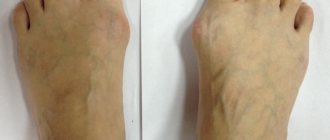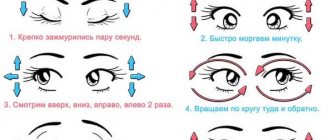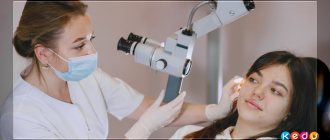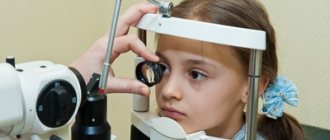Hearing loss in children can be of any severity. Hearing loss manifests itself in difficult perception of speech and sound signals. The main symptoms of hearing loss in children include:
- lack of response to whispers, speech, requests;
- absence of babbling and humming characteristic of newborn babies;
- impaired speech and intellectual development.
To identify the degree of hearing loss in children, various diagnostic methods are used: audiometry, otoscopy, acoustic impedance measurement, etc. A number of methods are used for treatment, including hearing aids, functional otosurgery, cochlear implantation, prescription of medications and physiotherapy.
Classification of hearing loss
A child's hearing loss may be:
- genetic;
- acquired;
- congenital.
Pathologies develop due to various physiological factors, including:
- damage to the inner ear, central parts of the auditory analyzer or auditory nerve;
- damage to the outer or middle ear, as well as to the eardrum.
The degree of severity is determined through special examinations. There are several degrees of hearing loss:
- The first, in which children hear speech from a distance of up to 6 meters, whisper from a distance of up to 3 meters, and cannot distinguish between remote speech or conversation in a difficult acoustic situation.
- Second. During it, the baby can distinguish whispers from a distance of no more than a meter, and spoken speech from a distance of up to 4 meters.
- Third. Spoken speech can be heard from a distance of up to two meters; whispers are indistinguishable.
- Fourth. Such hearing cannot even perceive spoken speech.
When the degree of hearing loss is more than 91 dB, complete deafness occurs. Also, hearing loss can be prelingual, that is, occurring before the development of speech skills, and postlingual, that is, occurring after the baby begins to speak.
Hearing impairment in newborns
The problem of hearing loss in newborns is important from both a medical and social point of view. Hearing loss in a child, unlike in an adult, leads to deviations in speech development, the formation of intelligence and personality as a whole, especially when hearing loss and deafness occur in newborns and children of early prelingual age.
According to statistics from the World Health Organization concerning industrialized countries, the number of children under the age of 16 suffering from hearing impairment of various etiologies in Russia exceeds 600 thousand.
It has been established that in 82% of children with hearing loss, the pathology occurs in the first year of life, i.e. before the development of speech or during its formation, of which 38.5% of children have disorders that appear in the perinatal period. It is believed that almost half of all hearing impairments in children are congenital in nature and, although according to statistics there is one child with severe hearing loss per thousand normal births, information about the prevalence of mild and moderate hearing loss needs to be clarified. According to scientists from different countries (USA, Canada, Mexico, England, Denmark, Japan), the frequency of congenital hearing loss ranges from 0.8 to 15.5/1000.
The uncertainty and inconsistency of data largely depend on the difficulties that arise when examining a child’s hearing, the inaccuracy of retrospective assessments, the lack of standards in determining various forms of hearing loss, and the fluctuating nature of some forms of hearing impairment.
The fate of a child with hearing impairment is determined by such factors as the age at which the hearing impairment occurred, the period of detection of the defect, the degree of hearing damage and the correct assessment of the potential capabilities of the residual auditory function, and, other things being equal, the timeliness of the start of treatment measures.
Detection of congenital (early) hearing loss during the newborn period is extremely important, since the time of initiation of treatment and educational work for the deaf are the determining factors in the problem of rehabilitation of children with hearing loss and deafness. A timely and correct diagnosis makes possible a more successful integration of the child into the speech environment.
An analysis of the age characteristics of children at the time of detection of hearing impairment showed that 33% of children are registered between the ages of 3 and 7 years, i.e., later than the critical age (1–2 years), children registered from 1 to 3 years years are 21%, and the detection rate of children with hearing impairments up to one year of age is 4%. This is due to many factors, but especially to the parents’ untimely contact with the doctor, the unforgivable delay by the pediatrician or ENT doctor of the child’s audiological examination (even if the parents contacted them in a timely manner), and often to an incomplete examination or its low level. To a certain extent, this depends on the lack of modern diagnostic equipment. According to foreign authors, the average age of a child when congenital (early) hearing loss is detected, if screening programs are ineffective, is 18–30 months, and this is only in the presence of profound, bilateral hearing loss, without taking into account weak and moderate losses.
In this regard, analysis of the etiopathogenesis of congenital hearing loss and timely detection of this pathology acquire paramount importance.
The formation of the fetal hearing organ begins from the fifth week of intrauterine life and continues throughout the entire period of pregnancy.
By the 20th week of pregnancy, the fetal inner ear has matured to the size of an adult inner ear. It has been proven that it is from this moment that the fetus begins to distinguish between the frequency and intensity of sound. However, the maturation of the temporal region of the cerebral cortex, “responsible” for auditory perception, continues until at least 5–6 years of a child’s life.
The reasons leading to congenital hearing loss are very diverse. Depending on which part of the hearing organ was affected pathologically, conductive (damage to the sound-conducting apparatus - the outer and middle ear), sensorineural (the receptor apparatus of the cochlea or the conductive tract and cerebral cortex suffer from retrocochlear sensorineural lesions) hearing loss may occur. The degree of change in hearing - from a slight decrease to complete deafness - depends on the strength of the pathogenic factor, the timing and duration of its action, as well as on the combination of various factors. With combined damage to the sound-conducting and sound-receiving departments, a mixed form of hearing loss is observed.
In the structure of all childhood hearing loss, 91.4% of this pathology are sensorineural lesions, 7.1% are conductive. In recent years there has been a tendency to mix these forms.
The main causes leading to conductive hearing loss are diseases of the external auditory canal, tympanic cavity and auditory tube (including developmental defects). In most cases, hearing loss and deafness in newborns and infants are sensorineural in nature.
Children with manifestations of hearing loss may also have a complex defect: damage to the auditory part of the peripheral analyzer and pathology of the central nervous system. This combination is explained both by the common origin and properties of the receptors of the cochlea and the nervous system, and by the pathological mechanisms of the formation of hearing impairment. Adverse factors in most cases affect not only the auditory analyzer, but also various parts of the brain.
Factors responsible for the development of hearing impairment in children, i.e., the causes of hearing loss, depending on the moment of impact, are divided into antenatal, intranatal and postnatal.
Antenatal and intranatal etiological factors lead to the formation of congenital hearing impairments, postnatal ones lead to early hearing loss. All hearing impairments in a child that arise during the perinatal period are considered congenital. Hereditary factors of hearing impairment have been noted when hearing loss or deafness is observed in one of the child’s close relatives; up to 50% of deaf children have a hereditary pathology.
Hereditary hearing loss includes a wide variety of genetic syndromes. Identification of the genes responsible for hearing loss is possible, but a genetically accurate diagnosis is rarely achieved.
With genetic pathology, hearing loss often manifests itself in the first or second decade of life and worsens with age, and at the birth of a child, differential diagnosis of syndromic and non-syndromic hearing damage is difficult.
Among the antenatal adverse factors affecting the fetus during the intrauterine period, the following are noted:
- pathological course of pregnancy (toxicosis of the first and second halves, nephropathy, threat of miscarriage, anemia, Rh sensitization, etc.);
- viral and bacterial infectious diseases of the mother during pregnancy, which primarily include cytomegalovirus and herpetic infections, influenza, rubella, toxoplasmosis;
- somatic diseases of the mother (diabetes mellitus, cholesterolemia, cardiovascular diseases, kidney diseases, etc.);
- treatment of the mother during pregnancy with ototoxic drugs - antibiotics (aminoglycoside series), diuretics (furosemide, ethacrynic acid), salicylates;
- consumption of alcohol, drugs, smoking, exposure to a number of agricultural and industrial substances, as well as radiation during pregnancy, etc.
Intrapartum causes include:
- the effect of unfavorable factors during childbirth, leading to asphyxia of the newborn, intracranial birth injury;
- rapid or prolonged, premature birth;
- breech, breech or face presentation;
- surgical aids during childbirth (obstetric forceps, vacuum extractor, caesarean section);
- bleeding during childbirth, placental abruption, threat of uterine rupture, etc.
Postnatal causes of hearing loss in young children have an adverse effect on the child’s body after birth. These include: hyperbilirubinemia, infections, sepsis, meningitis, meningoencephalitis, inflammatory diseases of the middle and inner ear, exogenous ototoxins, prematurity, etc.
Most of the factors listed above lead to asphyxia and hypoxia, which, in turn, causes poor circulation in the inner ear. The ischemia of the neurosensory area of the labyrinth that develops as a result leads to further disruption of microcirculation and liquor dynamics, acidosis, and tissue metabolism disorders. The toxic effect of products of impaired metabolism causes the development of microangiopathy of the vessels of the inner ear and the capillaries of the stria vascularis of the cochlea, which carry out trophic, metabolic and other processes important for the full functioning of the cochlea, as well as damage to the receptor apparatus of the spiral ganglion, which is highly sensitive to hypoxia.
Intrauterine viral and bacterial infections can cause hemodynamic disturbances of the inner ear, damage to the stria vascularis, and degenerative changes in the spiral ganglion, resulting in damage to the sensorineural portion of the hearing organ due to morphological changes in its peripheral part. In addition, damage to the central parts of the auditory analyzer is possible.
Thus, the development of hearing pathology is based on diverse mechanisms of interaction of pathological factors acting at different stages of ontogenesis and leading to changes at different levels of the hearing organ. All this complicates the diagnosis of hearing loss, especially at an early age, and makes it difficult to choose the right treatment and prevention.
The modern level of medical development allows us to accurately examine a child’s hearing almost immediately after birth. The earlier a hearing impairment is detected, the more successful all measures related to the correction of this impairment will be.
When is it ideal to diagnose a child’s hearing? According to modern ideas, which are confirmed by our research data, it is advisable to start diagnostics in the maternity hospital on the third or fourth day of life (in the first two days, remnants of amniotic fluid and vernix lubrication may still remain in the ear canal, so the results of an earlier study will be biased). There is a modern, painless, informative (although, unfortunately, requiring expensive equipment) screening method for examining hearing in a newborn - a method for recording evoked otoacoustic emissions. Diagnostics usually takes 5–15 minutes. To record delayed evoked otoacoustic emissions, a probe is inserted into the external auditory canal, the housing of which contains a miniature telephone and microphone. The stimuli are wide-band acoustic clicks with a repetition frequency of 20–50 s. The response signal reflected by the microphone is amplified and sent to the computer through an analog-to-digital converter. Research is carried out while the child is sleeping. The degree of hearing loss and the topic of damage in the examined children are determined by the method of recording short-latency auditory evoked potentials. These methods are highly informative when conducting audiological screening of newborns.
The cure for a hearing defect in a child depends, firstly, on the causes of hearing loss or deafness and, secondly, on how early this defect was diagnosed. Hearing impairment in newborns can be permanent or transient.
The final conclusion about the presence or absence of congenital (or early) hearing loss (even when using objective methods of hearing testing in diagnosis) is recommended to be made no earlier than two, but no later than three months of the child’s life.
Treatment of both acute and chronic sensorineural hearing loss still poses a serious problem. Insufficient knowledge of the pathogenesis of sensorineural hearing loss leads to unjustified use of medications or even refusal of treatment.
The success of the latter, in turn, depends on the degree of preservation of the elements of the inner ear and the reversibility of pathological changes. It is believed that for persistent, long-term sensorineural hearing loss due to the destruction of the morphological substrate of sound perception, drug treatment is ineffective.
However, if hearing thresholds remain stable during treatment, patients' auditory perception improves. It has been noted that with regular treatment of children with congenital sensorineural hearing loss, memory, the process of learning speech, adaptation to the hearing aid, and speech intelligibility improve. Therefore, treatment of such patients is aimed at slowing down and preventing the process of degeneration of the hair cells of the auditory analyzer. The timing of the start of treatment and its adequacy are one of the main factors determining the success of therapy.
Drug therapy for hearing loss should be aimed at improving the condition of receptor structures, normalizing blood and lymph circulation in the inner ear and brain, and normalizing tissue and cellular metabolism of the central nervous system. Complex treatment includes agents that selectively affect each link of pathogenesis.
Drugs that have a vasodilating effect and improve blood circulation in the brain and inner ear, as well as leading to normalization of metabolism, include Complamin and Cavinton. Vinkapan, vinkatone, stugeron, and cinnarizine act similarly. The positive dynamics of nervous processes in the brain are facilitated by the drugs aminalon and encephabol. Also, when treating such patients, you can use no-shpa and papaverine, which have a vasodilating effect. Improving tissue metabolism is achieved by using cocarboxylase, pyrogenal, vitamins B and E (dodex, vitrum vitamin E, doppelhertz vitamin E, tocopher 200, evitol, Vetoron-E, kudesan).
Drugs that stimulate the conduction of nerve impulses by increasing the formation of acetylcholine include galantamine and strychnine (in children, these drugs are used mainly in the form of electrophoresis). Also, to improve the conduction of impulses along the nerve fiber, anticholinesterase agents are used: prozerin, oxazil, dibazol.
Biogenic stimulants are widely used in children: apilac, aloe, potassium iodide, etc.
In the acute period of the disease, moderate dehydration in the mode of forced diuresis is additionally used to reduce intracranial pressure, glucocorticoid therapy to improve blood circulation conditions in the inner ear, detoxic drugs - unithiol, hemodez.
The use of antihypoxants helps to increase tissue resistance to oxygen starvation.
In conditions of acute dyscirculation and ischemia of the labyrinth, it was pathogenetically justified to include pharmacophysical angioactive therapy using magnetic, laser, and hyperbaric oxygenation in the course of rehabilitation treatment.
Comprehensive rehabilitation includes electroacoustic hearing correction with individual hearing aids, defectological and educational assistance for the deaf, motor rehabilitation, development of communicative function and social orientation. Despite the numerous proposed treatment regimens and methods, for most children with sensorineural hearing loss, the only method of rehabilitation is hearing aid.
Rehabilitation of children with sensorineural hearing loss and deafness is a complex problem, the effectiveness of which is largely determined by the harmonious combination of medical and pedagogical correction of impaired auditory function.
L. P. Ponomareva, Doctor of Medical Sciences, Professor of the Scientific Center for Gynecology and Pediatrics of the Russian Academy of Medical Sciences, Moscow
Factors that cause hearing loss
Hearing, the loss of which is a serious problem, can be impaired due to various reasons. These include:
- Heredity, in which hearing changes are most often irreversible;
- Congenital pathologies that develop during the prenatal period. They can occur due to various diseases that the pregnant woman has suffered, or due to fetal asphyxia, birth injuries, malformations and prematurity.
- Acquired disorders that arise due to cerumen plugs, the presence of foreign bodies in the ear, perforation of the eardrum, adenoiditis, severe viral and colds, injuries, hydrocephalus, drug intoxication, vaccination. The use of headphones also contributes to the development of hearing defects.
Causes of hearing loss in a child
According to WHO, 70% of cases of hearing loss in children occur at the age of 2-3 years, after which the risk decreases.
The main causes of hearing loss in childhood are the transmission of various infectious diseases affecting one or another part of the hearing organ.
The most dangerous diseases for hearing include:
- meningitis
- encephalitis
- measles
- influenza and its complications
But most often the cause of hearing loss is otitis media. Damage to the trunk auditory nerve or inner ear is dangerous due to the occurrence of complete deafness; otitis media of the middle ear is fraught with partial hearing loss. Diseases of the upper respiratory tract and nose, especially at an early age, also pose a danger to a child’s hearing.
The incorrect use of medications, in particular antibiotics, is also dangerous - their toxic effect on the child’s still weak body can negatively affect the still developing hearing organ.
Mechanical injuries can also cause hearing loss in children. Head injuries, exposure to sudden loud sounds (for example, horns), explosions. The incorrect use of medications, in particular antibiotics, is also dangerous - their toxic effect on the child’s still weak body can negatively affect the still developing hearing organ. This is why children should never be given antibiotics on their own, without prior consultation and a doctor’s prescription.
At an older age, a particular danger to a child’s hearing organ is prolonged exposure to a sound stimulus - or, to put it simply, prolonged listening to loud music, especially with headphones. The so-called in-ear and in-ear headphones pose a particular danger - they are too close to the eardrum. Using low-quality audio equipment is also dangerous.
Identification and management
- Early identification of hearing loss and ear disease is critical for effective patient management.
- This requires systematic screening to identify ear diseases and associated hearing loss among the following populations most at risk:
- newborns and infants.
- children of preschool and school age.
- people exposed to noise or chemicals at work.
- people taking ototoxic drugs.
- elderly people.
- use of hearing technologies such as hearing aids, cochlear implants, and middle ear implants;
- the use of sign language and other means of sensory substitution, such as visual speech perception (lip reading), the use of the Tadoma method (putting fingers to the lips and cheeks of the speaker) by deaf-blind people, and communication with gestures; And
- rehabilitation therapy to improve receptive skills and develop communication and language abilities.
About the nature of sound
Sound is a wave that propagates through a medium and creates mechanical vibrations. Actually, we perceive these vibrations with the organ of hearing. Like any wave, sound is characterized by frequency and amplitude. Amplitude is the loudness of a sound and is measured in decibels (dB). Frequency is defined as the number of vibrations per second and is expressed in hertz (Hz). The higher the frequency, the higher the sound, and vice versa. A person is able to hear sound in a wide frequency range, but only sounds from 125 to 8000 Hz are important for life. For example, sound waves in the range of 500-4000 Hz correspond to the human voice.
The sound of a piccolo flute, a child's voice, birdsong, whispers are high frequencies, the sound of a double bass, the growling of animals, and thunder are low frequencies.
A decrease in the range of audible frequencies can change for various reasons; this is associated with changes in the inner ear (cochlea) and is called hearing loss.
Types of Hearing Loss and Degrees of Hearing Loss
There are two types of hearing loss:
- Conductive hearing loss is a temporary or permanent decrease in the volume of ambient sounds. Problems of this type are solved using a conservative or surgical method. If the treatment is not effective enough, then correction is performed with hearing aids.
- Sensorineural hearing loss is a significant disturbance not only in the volume level of sounds, but also a distortion of sounds, which is expressed in speech unintelligibility. The defect cannot be corrected by medication or surgery; it can only be compensated with the help of hearing prostheses.
Experts distinguish 4 degrees of hearing impairment.
- I degree (mild): the child hears well, but may experience certain problems when placed in a noisy acoustic environment;
- II degree (moderate): difficulties arise when speaking in a whisper in a quiet environment;
- III degree (moderately severe): violations are recorded even with loud speech;
- IV degree (severe): the child hears only what sounds in the immediate vicinity of his ear. Next comes complete deafness.
Parents should not ignore warning signs in their child’s behavior and remember that the earlier treatment is started, the greater the chance of hearing restoration.
Symptoms of hearing loss in a child
Hearing loss is especially difficult to recognize in infants. If you suspect abnormalities in a newborn, perform a small test - create an unexpectedly sharp and loud sound. A child who develops normally will certainly react by turning his head, crying or making an emotional grimace. If you still doubt the adequacy of your baby’s hearing perception, do not hesitate to contact an otolaryngologist.
In older children, hearing loss is more pronounced:
- Deviations in development (especially speech);
- Complaints of a feeling of congestion, pain, tinnitus;
- Dizziness of unknown origin;
- The emergence of the habit of repeating any spoken remark;
- Watching cartoons and movies at too high a volume;
- Deliberate refusals to talk;
- Raising the tone of the dialogue.
Children may not express direct complaints about their hearing difficulties. Therefore, it is extremely important for you to show your child to the doctor if there are any alarming symptoms.
Signs of hearing loss
The main sign of hearing loss in a young child is a lack of response to loud sounds. Normally, a reaction in the form of flinching or crying should be present after two weeks of life. In addition, parents should be wary if the baby:
- does not respond to his name (aged 1.5 years and older);
- does not understand simple requests or does them incorrectly;
- understands the parent better if he accompanies his speech with gestures;
- lags behind in speech development: the first words appeared after 1.5 years, and the first sentences - after 2 years;
- does not pronounce high-frequency sounds [s], [ts], [x], [f], skips prepositions and syllables in words;
- cannot pronounce several words in a row, speech is unintelligible (by 3 years).
As they grow older, hearing problems may be indicated when a child:
- does not answer a question or request, often asks the interlocutor again;
- does not understand the parent well if he is in a store or on the street;
- carefully looks at the adult’s face and facial expressions when communicating;
- asks to increase the TV volume when the sound level is sufficient;
- does not study well at school, dictations are especially difficult for him;
- poorly assimilates information in audio format;
- often changes ears while talking on the phone;
- begins to pronounce words loudly and often answers out of place.
If several of the above signs are present, parents should immediately contact an otolaryngologist.
Causes of hearing loss in old age
The body of an elderly person undergoes a number of changes, including the auditory system. Various components of the hearing organ atrophy or fail, the skull bones lose elasticity and sound conductivity, etc.
Age-related hearing loss, or presbycusis, usually develops gradually. As a rule, the first alarming sign is poor perception of high-pitched voices (children's, women's) and all high-pitched sounds in general. As a rule, hearing impairment in this case is bilateral.
Based on its forms, senile hearing loss is usually divided into sensorineural and conductive. Sensorineural hearing loss is caused by problems with the auditory nerve or inner ear. In addition to hereditary predisposition, factors in the development of this form of presbycusis can be certain types of infectious diseases, taking medications that have a toxic effect on the organ of hearing, injuries to the head and organ of hearing, and “wear and tear” of the system due to frequent and prolonged exposure to noise and noise pollution (so , representatives of “noisy” professions – construction workers, airport workers, musicians, etc. – will be in a special risk group.)
Problems and changes in the middle ear lead to what is called conductive hearing loss. As a rule, it is associated with irreversible processes that occur in the aging body over time. Often the cause is deformation of the auditory ossicles.
Chronic diseases such as coronary heart disease and diabetes mellitus or diseases affecting the hearing organ (otitis media, meningitis) also increase the risk of developing senile hearing loss.
How to reduce the risk of developing hearing loss
To reduce the likelihood of sensorineural hearing loss, you should adhere to simple preventive measures:
- Avoid prolonged or repeated exposure to loud noise. For example, wear hearing protection when working with noisy tools. Do not attend concerts and clubs where loud music is played. The noise at a rock concert reaches the same level as the roar of jet engines (140 decibels);
- use headphones instead of turning up the volume when there is noise;
- Be careful when using antibiotics belonging to the aminoglycoside group. They are ototoxic, meaning they can negatively affect the hearing organs. Some other drugs also have similar properties.
